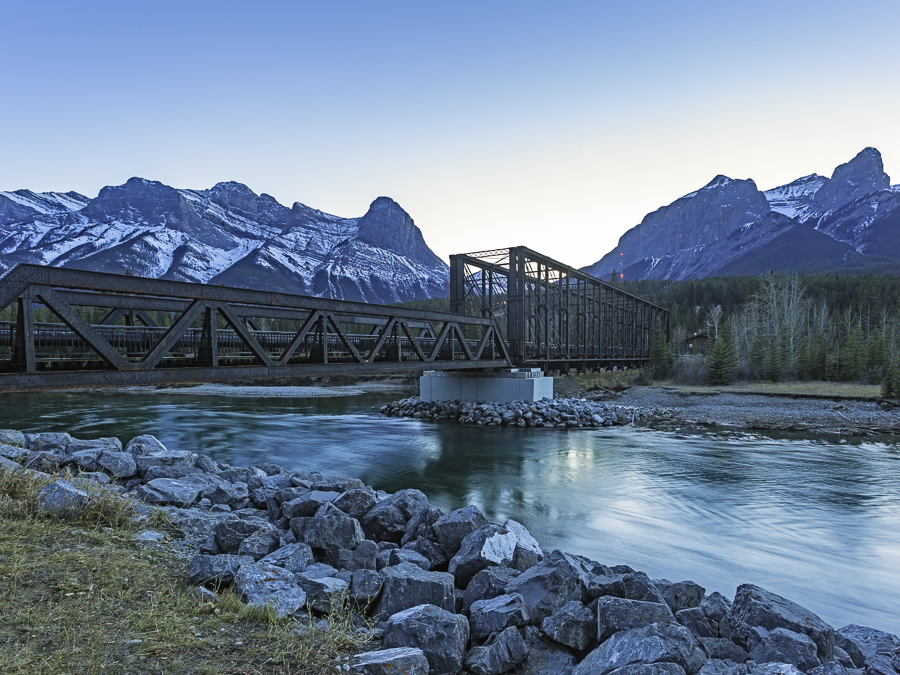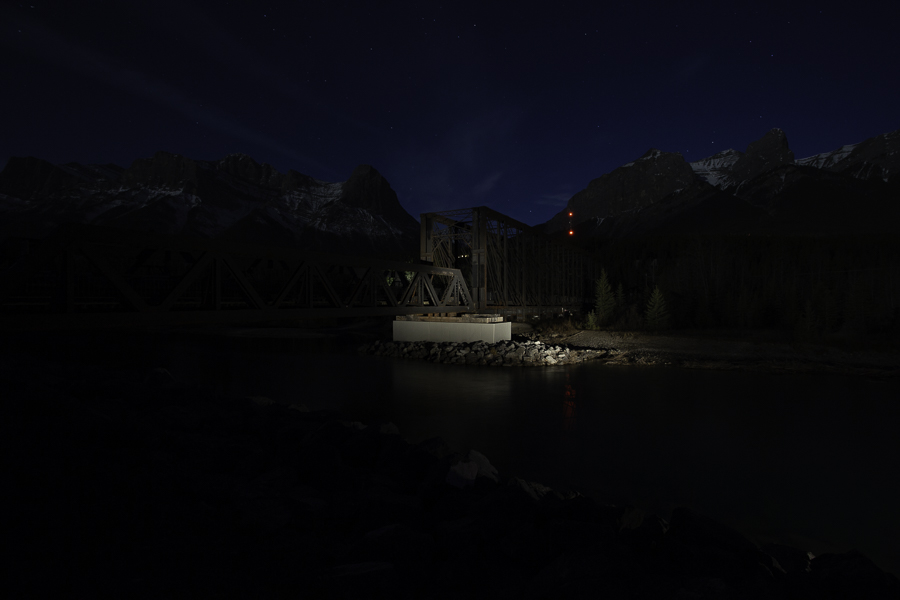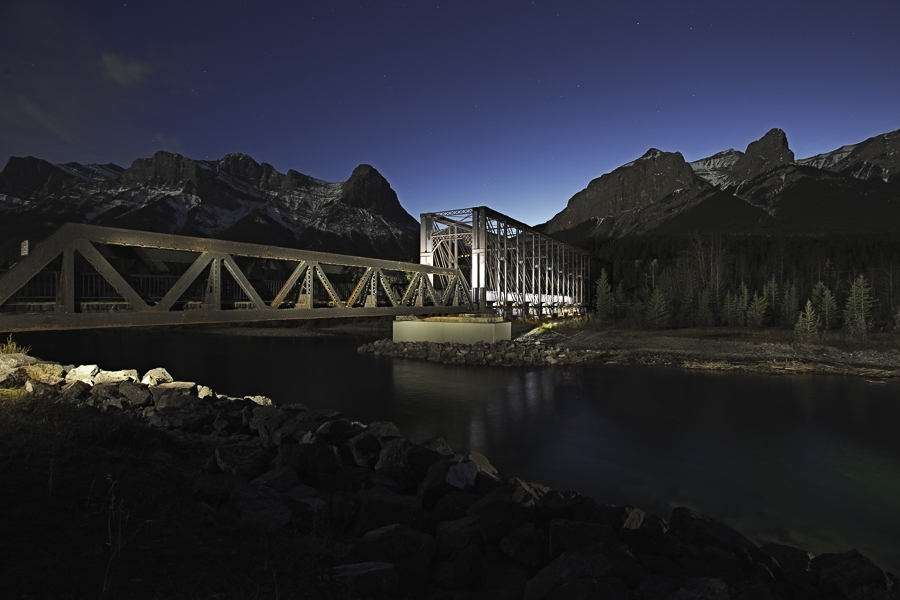I recently participated in an evening photo shoot with fellow members of the Canmore Camera Club. This particular form of photography is new to me and it was a great learning experience. It’s a technique that can really produce some striking results. It’s credited to an American photographer, Eric Curry who produces some truly amazing pictures. You can access his site and view some of his work here if you are interested…http://www.americanprideandpassion.com
We began in the early evening, did some preparation and then began photographing in earnest after nightfall. There were about a half dozen of our members there, including Harv Emter who shared his knowledge of the technique and performed the actual light painting. Light painting is much like it sounds. The subject of the photography is swept with a beam of light while the camera is open and a photograph is being taken. Typically it’s done outside at night (or in a darkened studio). Exposure times are long, ranging in duration from several seconds to several minutes. During the time the shutter is open, the light shining on the subject accumulates on the camera sensor and forms part of the image.
Our subject was the Engine Bridge, crossing the Bow River in Canmore. It originally served as a crossing for rail cars transporting coal across the river. It’s now part of our town’s path system, a pedestrian bridge. This first photograph was taken in the early evening to show the scene we later “painted” and photographed in darkness.

We each took about 60 separate pictures of the bridge and its surroundings. For every picture, an area of the scene was illuminated using the painting technique. Our cameras exposed each image for a period of 20 seconds (I used an aperture setting of f/8.0 and an ISO setting of 800 for all my shots). The process continued until every area of the scene chosen to be included in the final image had been illuminated and photographed. Following is how one of the component images appears. Most of the image is dark; the illuminated area is visible, having been “painted”.

The final step is to assemble a selection of the images to create the final photograph. I chose 20 of the 60 pictures I had taken to put my photo together. These twenty raw images were stacked atop one another in Photoshop and blended in a way that only the brighter (illuminated) areas of the images could show through. The mountains in the background were nicely illuminated without our help. We enjoyed the benefit of a full moon! A final step is a little touch-up with Photoshop and voila!
A couple of observations:
- The appearance can be influenced not only by the intensity of light applied but also by its colour tone. You’ll notice that the rear section of the bridge (black in daylight) appears silvery due to the cool tone of the light used. Other areas of the scene have a warmer tone, painted with a warmer light. Moonlight creates a cool cast on the mountains.
- The light serves to bring out the detail otherwise obscured in darker areas of the image. Obviously, much more detail can be exposed by using a greater number of painted regions. Regrettably, the small size of this image doesn’t display the excellent detail in the illuminated areas very well. You can get a better idea of what’s possible from Eric curry’s pictures.

To see a better, larger version of this image, look here..https://drive.google.com/drive/folders/10GTizCB0-Q2kpB6gb6x9vrsPyWGind9R

Spectacular!!!Love it.
Helen
Peter, What an interesting technique. Our little camera club here in Buderim would find this a bit too advanced at the moment but I will tell them about it at our next monthly meeting. Keep up the good work. I am inspired by your photography and am gradually becoming more adventurous trying different things. Its Spring here and the flowers are blooming and the Bees bussing. A lovely time of the year.
Fond memories of our time spent with you and Rolande. Would love to see you both here in Oz some time in the future.
Hi peter:
Very interesting on how one picture can make many beautiful scenes with a little different technique.
Hi To rolande